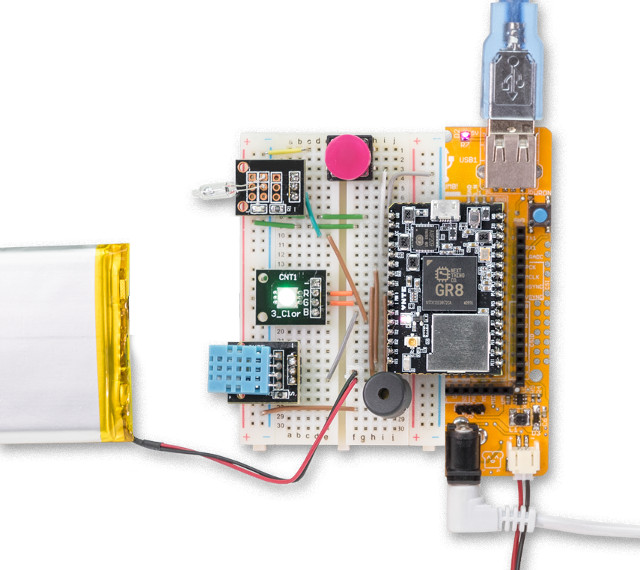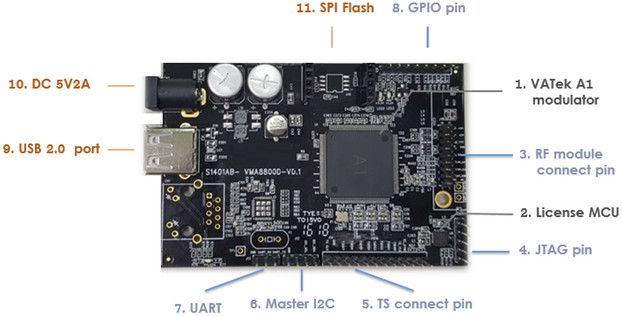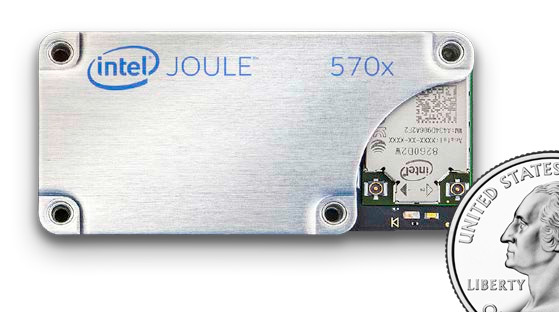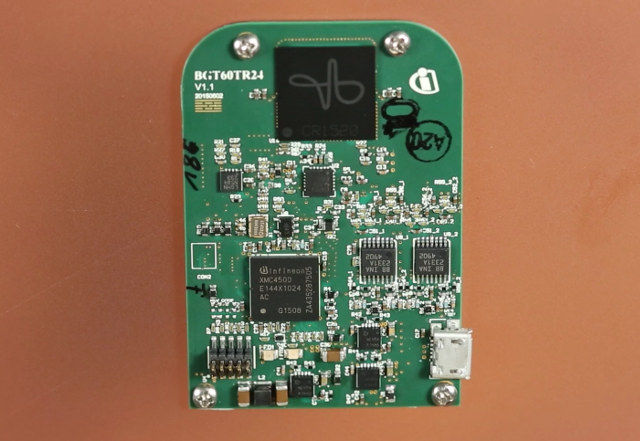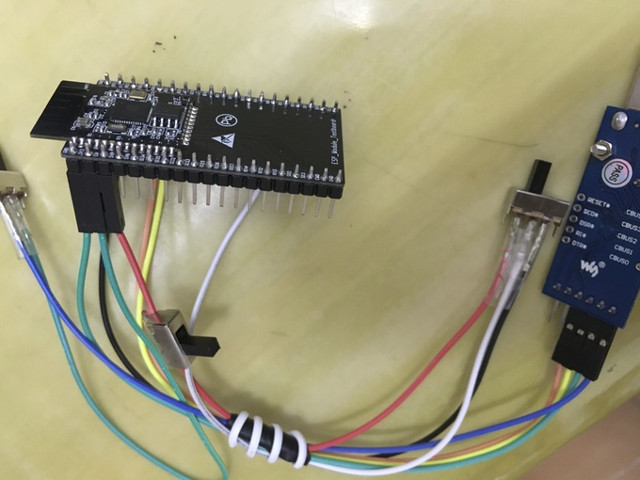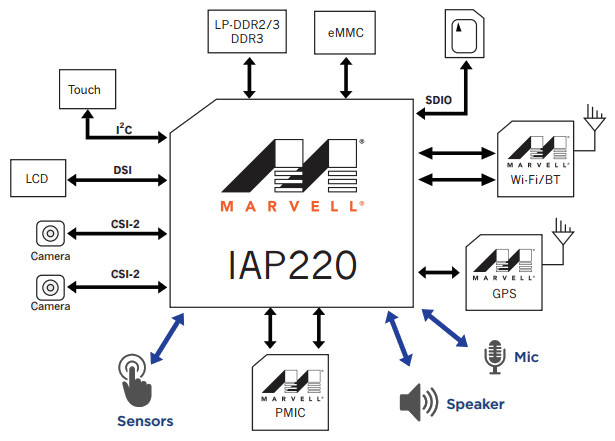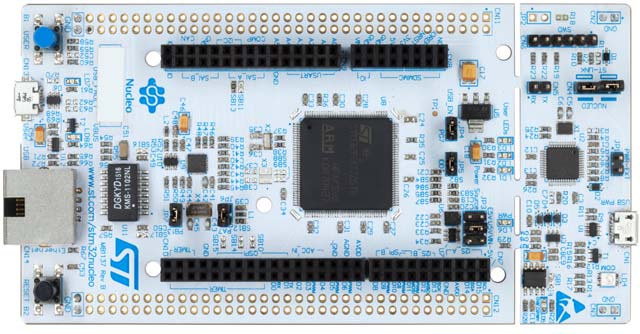Next Thing CHIP board and corresponding PocketCHIP portable Linux computer have been relatively popular due to their inexpensive price for the feature set, as for $9, you’d get an Allwinner R8 ARM Cortex A8 processor, 512MB flash, 4GB NAND flash, WiFi & Bluetooth connectivity, and plenty of I/Os, which made it very attractive for IoT applications compared to other cheap boards such as Raspberry Pi Zero and Orange Pi One. The first board was mostly designed for hobbyists, but company has now designed a new lower profile system-on-module called CHIP Pro based on Next Thing GR8 SIP combining Allwinner R8 SoC with 256MB DDR3 RAM that can be used for easy integration into your own hardware project. While the original CHIP board exposed full USB ports and interface for video signal, the new CHIP Pro is specifically designed for IoT with the following specs: SIP – Allwinner R8 ARM Cortex […]
V-Bridge Muses Digital TV Modulator Boards Let You Broadcast Your Own TV Channel for $199 and Up (Crowdfunding)
I wrote about VATek VMB8202D Enmoder SoC handling both DVB, ATSC, DTMB and ISDB modulation and H.264 hardware encoding earlier this summer, and at the time, the company also planned to launch a crowdfunding campaign for two open source hardware DTV modulation boards in a couple of weeks. Weeks turned into months, but finally V-Bridge Muses boards and video input & RF daughterboards have now launched on Kickstarter where you can get your own live video broadcasting board for $199 and up. MUSES-α board MUSES-α board is the cheapest of the two boards, and features a header for the RF daughter board, and a USB port to connect to a computer. MUSES-α board specifications: SoC – VATek A1 32-bit RISC modulator chip Storage – SPI flash (unclear whether it can be accessed/modified by user) Modulation – DVB-T/C, ATSC/QAM, DTMB; RF header Video Encoding – N/A (handled by PC via USB […]
Intel Unveils Joule Compute Module and Devkit for IoT based on Atom T5500 & T5700 Processors
As the Intel Developer Forum 2016 is now taking place in San Francisco, Intel has unveiled the Joule Compute Module and development kit targeting IoT applications. The module is not for low cost and low power sensor nodes however, as it features a powerful quad core Atom processor running at 1.5+ GHz, so it more suited to IoT gateways, or other application requiring lots of processing power to handle sensor data. Two models of the Joule module have been introduced: Intel Joule 570x platform SoC – Intel Atom T5700 64-bit quad-core processor @ 1.7 GHz / 2.4 GHz (Burst frequency) with Intel HD Graphics with 4K video capture and display System Memory – 4GB LPDDR4 RAM Storage – 16GB eMMC memory Connectivity – 802.11ac Wi-Fi with MIMO and Bluetooth 4.1 Other interfaces – USB 3.0, MPI CSI and DSI interfaces, and multiple GPIO, I2C, UART interfaces Intel Joule 550x platform […]
Infineon Showcases the Radar Board used in Google’s Project Soli, and Sense2Go Development Kit (Video)
Google’s Project Soli sensing technology uses a miniature radar to detect touchless gesture interactions, so that you can control devices such as wearables using gestures without having to physical touch the product. The 60 GHz radar technology used in the project has been developed by Infineon, and the company was recently interviewed by Arrow Electronics where they showcased Soli board, as well as another 24 GHz radar development kit called Sense2Go. The Soli board called BGT60TR24 features Infineon XMC4500 ARM Cortex M4 MCU, and a 60 GHz “CRIS20” radar chip designed specially for Project Soli by Infineon, and allowing 20mm resolution, falling to less than one millimeter with Google’s algorithms. The micro USB port will be used for power and programming. This board should be the one included in Project Soli development kit to be shipped to developers this fall. Infineon also have a Sense2Go 24GHz sensor development kit that […]
Get an Early ESP32 Board by Contributing to Luanode for ESP8266 & ESP32 Project (Crowdfunding)
Development boards and module based on Espressif ESP32 dual core processor with WiFi and Bluetooth LE connectivity are due for Q3 or Q4 2016, but you could get an early sample as early as July if you contribute to Jimmy Wu’s (of wifimcu.com) crowdfunding campaign to develop Luanode (Lua SDK) for ESP8266 and ESP32 processors, as ESP32 boards are part of the rewards. Luanode is a Lua SDK for ESP32 and ESP8266 that supports multi-tasking through FreeRTOS, and includes support for peripherals. The source code and documentation can be already be found on Github, and the main differences against something like NodeMCU appear to be multi-tasking and (for now) ESP32 support. Interestingly the SDK contains a tools called WiFi-Killer uses for Denial of Service (DoS) attacks using ESP8266 or ESP32 modules… One hardware project is called WiFi tank comprised of one T300 Tank Chassis, ESP8266 Development Kit, 720p HD Camera, […]
Marvell IAP220 “IoT” Processor Targets Low Power Touchscreen Enabled Appliances
After IAP140 quad core Cortex A53 processor found in Brillo compatible AndroMeda Box Edge, Marvell has recently introduced another IAP processor for the Internet of Things with IAP220 dual core Cortex A7 processor targeting “low power cost sensitive home automation, industrial, security, and wearable applications”. IAP220 SoC specifications: Processor – Dual ARM Cortex-A7 core up to 1.0 GHz GPU – 3D GPU with OpenGL ES 1.1/2.0 support MCU – ARM Cortex M4F Memory I/F – LP-DDR2/3, DDR3 Storage – eMMC and SDIO interfaces Display – MIPI video and command mode; LCD display Video – Full HD encode and decode with H.264, MPEG-4, H.263, MJPEG and more Camera – Digital video camera interface, 2x, 2-lane CSI Audio – I2S, TDM; support for multiple PDM (pulse-density modulation) microphones and speakers Sensor hub • Low power sensor processing Management I/O – SPI, GPIO, PWM? (the product brief says PWD instead), UART, 1-wire, I2C […]
STMicro Unveils Two Low Cost STM32F7 ARM Cortex M7 Development Boards
STMicroelectronics introduiced its STM32F7 ARM Cortex M7 micro-controller family in 2014, and they released a $49 STM32F746G discovery board later in 2015. The company has now launched two new low cost development boards with the $23 STM32 Nucleo-144 board based on STM32F767 MCU, and a $79 Discovery Kit powered by STM32F746 MCU with TFT-LCD and MIPI-DSI support. STM32 Nucleo-144 development board Key feature of NUCLEO-F767ZI board: MCU – STMicro STM32F767ZI ARM Cortex M7 microcontroller @ 216 MHz with FPU, DSP, MMU, 2MB flash, 512 KB SRAM, 16 KB instruction TCM RAM (for critical real-time routines), and 4 KB backup SRAM Connectivity – IEEE-802.3-2002 compliant Ethernet connector USB – 1x micro USB OTG or full speed device Extension: ST Zio connector including support for Arduino UNO v3 connectivity, and additional signals (A6 to A8, D16 to D72) ST morpho extension pin header footprints for full access to all STM32 I/Os On-board […]
$49 STEVAL-WESU1 Wearable Sensor Unit Reference Design is Based on STMicro STM32 MCU
STMicroelectronics STEVEL-WESU1 is a wearable open source hardware reference design and development kit comprised of a board with STM32L1 ARM Cortex-M3 micro-controller, BlueNRG-MS Bluetooth LE chip, and sensors, a battery, and a watch band. STMicro “WESU” specifications and features: MCU – STMicro STM32L151VEY6 32-bit ARM Cortex-M3 MCU @ 32 KHz to 32 MHz, 512KB flash, 80 KB SRAM Connectivity – Bluetooth 4.0 LE via BlueNRG-MS BLE network processor Sensors – 3D accelerometer + 3D gyroscope (LSM6DS3), 3-axis magnetometer (LIS3MDL), MEMS pressure sensor (LPS25HB) USB – 1x micro USB port for recharging Debugging – SWD connector for debugging and programming capability Power 100 mAh Li-Ion battery included, UN38.3 tested and certified STNS01 Li-Ion linear battery charger STC3115 Fuel gauge IC Watch strap with plastic housing included Certifications – FCC (FCC ID: S9N-WESU1), IC (IC: 8976C-WESU1), RoHS The kit can be controlled by ST WeSU app for Android and iOS, and developed using BlueST […]


